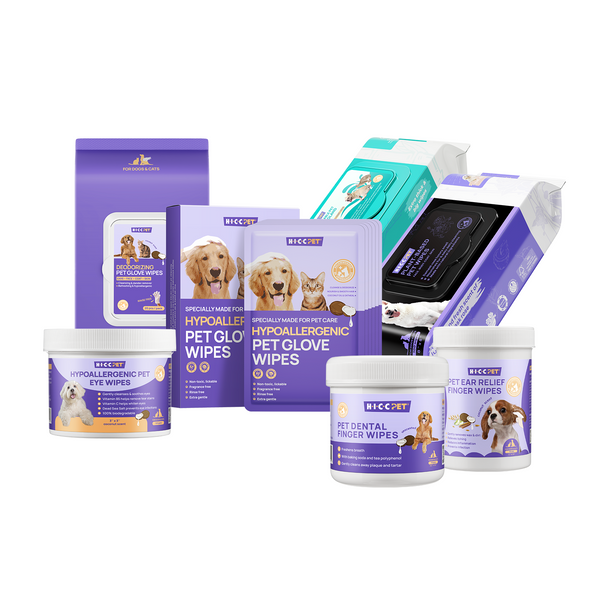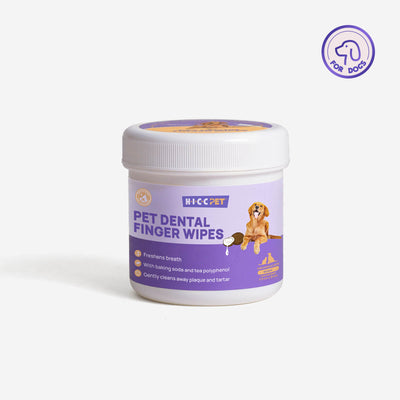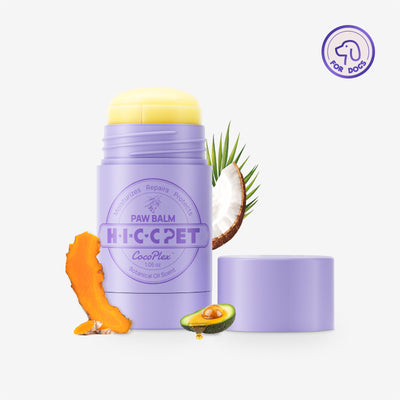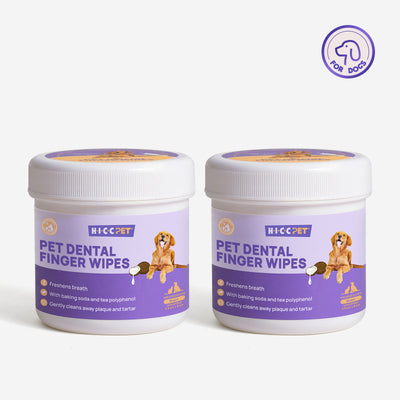Embarking on the journey of dog ownership is a rewarding and life-enriching experience. As you open your home and heart, it's crucial to remember that being a responsible dog owner goes beyond providing food and shelter. It involves a commitment to their physical and emotional well-being, fostering a loving and nurturing environment, and ensuring they lead a happy and healthy life. This guide will cover some of the most important of how to be a responsible dog owner and loving dog parent.
Pick Up That Poop

We’ve all seen it…that one dog owner that continuously lets her pup poop wherever they want while actively avoiding picking it up. Being accountable for your dog’s waste and keeping the area clean is one of the easiest ways to be a responsible dog owner. Yes, it can be gross BUT this is something that you signed up for. Not only is it the law to clean up after your dog, but it can also be a major inconvenience for the community you are in. There’s nothing worse than stepping in dog poop when out and about! There are multiple reasons that this is a law as it can affect the environment negatively as well. Fecal matter easily washes into lakes, rivers, and other local water sources dog feces also harbor harmful pathogens like E. coli and salmonella, which can pose health risks to humans, pets, and wildlife when they contaminate drinking, swimming, and fishing water sources.
Keep Identification Up to Date
Did you know that approximately 10 million dogs are lost or stolen in the United States? Moreover, dogs tend to be found and reunited with their owners more often than cats. Why is this the case? One reason is that dogs are significantly more likely to have identifying tags than cats. Out of those dogs that are found, approximately 9-23% are reunited with their owners thanks to their identification tags or microchips.
Dogs are found on the streets daily, sometimes without collars, tags, or even microchips. In cases where they do have microchips, many of these remain unregistered. To enhance your chances of reuniting with your lost dog, it’s imperative to keep their identification and contact information up to date on both their tags and microchips. Every dog should have some form of physical identification, particularly when in public. This is especially crucial because many dogs become lost during outdoor adventures, chasing after squirrels, with leashes occasionally slipping out of their owner's hands. Fortunately, tags are readily available for purchase online or at most local pet stores.
If you’re one of those dog owners who don’t leave collars on their dogs when they're alone at home, keeping that microchip up to date becomes even more crucial. Dogs from rescues and shelters usually come with a microchip that initially contains the shelter or rescue’s contact information. However, it's essential to register the tag and update it with your own details. But how do you go about registering it? There are multiple online sites where you can register your microchip for FREE!
Now, let's consider a scenario where your dog doesn’t have a microchip. Where can you get one inserted? Your regular veterinarian will be able to insert a microchip during your next visit. Additionally, there are local microchip and vaccine clinics available in most cities, making it easy to sign up for this service! Just remember to keep the information updated whenever there are changes, such as phone numbers and addresses.
Leash Them Up

Throughout the United States and in many other countries, dogs are legally required to be on leashes while in public spaces unless they are service dogs whose job may be impaired by a leash. However, it appears that certain individuals believe this law doesn't apply to them, and they should be allowed to have their dogs roam off-leash. Dogs venturing off-leash can create a host of problems, ranging from minor incidents to potentially fatal ones. Yes, fatal. Off-leash dogs run the risk of approaching aggressive or reactive dogs that may respond more defensively than just with a bark. They can also dart into streets and be hit by vehicles, or approach people who may not be fond of dogs, among other potential issues.
For those with reactive dogs, encountering an off-leash dog while walking your dog can cause your heart rate to beat a bit faster. To ensure safety, dogs should be kept on a maximum 6-foot leash with proper collars or harnesses to prevent slipping out of them. For those who might use retractable leashes, we strongly advise switching to a standard leash, as retractable leashes make it harder to control dogs and can result in injuries to you or other dogs due to the thin cable attached to your pup's leash. Being a responsible dog owner entails protecting not only your dog but also other dogs and people who may be negatively affected by the lack of a leash.
Feed the Right Diet
Diets play a vital role in nurturing your dog's overall health and well-being throughout various life stages, from puppyhood to adulthood and into their senior years. As responsible dog owners, we bear the crucial responsibility of furnishing our canine companions with nutritious food. However, amidst the constant advice from nutritionists, a plethora of food brands, and an abundance of information on what's beneficial or detrimental to their health, it's easy to feel pulled in different directions. It's important to remember that what suits your dog best may significantly differ from what's suitable for the pup next door. To assist in making informed choices, The Association of American Feed Control Officials (AAFCO), an independent organization that provides guidance to state, federal, and international feed regulators, has outlined guidelines on how to help you select the ideal food for your striving pup. These guidelines include understanding labels, determining what constitutes "safe pet food," and ensuring all approved foods provide a balanced diet.
One of the first steps in choosing food is checking if it is AAFCO certified, as this can determine whether the food contains regulated ingredients and meets certain standards. However, the rest is up to you. The essential components of food to consider include:
- Protein, which builds muscle and breaks down into amino acids.
- Fat, which provides energy, maintains healthy joints, skin, and coats, and supports brain function, but too much can be harmful.
- Carbohydrates, which provide energy to dogs and help increase calorie content without excess protein or fat.
- Vitamins, as dogs require specific amounts of Vitamin A, D, E, and K, as well as several B vitamins.
- Minerals, including calcium, phosphorus, iron, copper, zinc, and selenium, among others, contribute to bone health and regulate various bodily functions, including muscle coordination.
- Water, which is included in the majority of dog foods, including dry kibble. However, dogs still need clean, fresh water available regardless of their food.
Another critical aspect of selecting dog food is the TYPE of food. Over the years, various types of dog food have become popularized and available on the market beyond traditional kibble and wet food. However, the increased choices can make the decision more challenging. Fresh dog food, dehydrated foods, and raw food are among the newest trends in dog nutrition. If you opt for a homemade raw or fresh diet, it's essential to consult with your veterinarian to ensure your four-legged friend receives the necessary nutrients. You can even combine these options!
Ultimately, if finding the right food proves difficult due to the overwhelming choices, your veterinarian may be able to recommend an appropriate diet or refer you to a veterinary nutritionist. Veterinary nutritionists are the only board-certified specialists in the field of nutrition and can provide expert guidance.
Regular Vet Visits

In general, it's recommended that all dogs undergo a comprehensive physical check-up at least once a year. Regular "wellness exams" offer a chance to monitor your dog's growth, address concerns with your veterinarian, and, above all, play a crucial role in preventive care. Preventive care encompasses various measures, such as ensuring they receive the right nutrition, getting an appropriate amount of exercise, and adhering to regular veterinary appointments. These check-ups also play a vital role in early detection, which can be crucial for effectively treating potential illnesses or issues. Additionally, it is recommended that adult dogs visit the vet for their check-up once per year, with puppies and seniors requiring check-ups twice per year.
Get Them Vaccinated
The first thing to know is that vaccines are put into two categories: core vaccines and non-core vaccines. Core vaccines are those that are required and an essential part of keeping your dog safe and healthy such as the rabies vaccine and the DHPP combination vaccine, which safeguards against distemper, adenovirus, parainfluenza, and parvovirus. Non-core vaccines for dogs are based on where you live and your and your pup’s lifestyle. Examples of non-core vaccines include Lyme, canine influenza, and Bordatella. Opting out of essential vaccines poses a risk to your dog as well as others that your dog may be around
This not only protects your dog but others as well such as those they may be around in daycare, at a grooming facility, or even out for a walk if a fight ensues. Your veterinarian will provide the information on which vaccinations are required and recommended.
Keep Up With Grooming

Grooming should be part of your pup's routine as it can serve as both a preventative measure against future health issues and provide immediate relief to your furry friend. Regular at-home grooming can even help you avoid more expensive grooming bills down the road, as the cost of de-matting can quickly accumulate while causing extreme discomfort to your dog.
The first step in maintaining your dog's grooming routine is regular brushing, although the frequency will depend greatly on your dog's fur type. Short-haired dogs typically benefit from weekly brushing, while medium and long-haired breeds require daily attention to ensure their comfort and minimize shedding. For dogs with dense undercoats, whether their fur is short or long, daily brushing is also recommended. Your veterinarian or groomer may be able to recommend how often you should brush and which brushes to use.
Bathing your pup, whether it be by you or a groomer, should be a part of your pet's grooming routine. Even if you don't see it, dogs are building up dirt, grime, and dust in their fur in which result can cause matting. For those periods between bath time, Grooming Wipes can help with eliminating orders, removing dirt, and keeping the fur moisturized.
Trimming your dog's toenails is another essential aspect of grooming, usually required every one to two months. Dogs that spend a lot of time on hard surfaces may naturally wear down their nails, but indoor or soft-surface dwellers may not experience the same natural filing. As a responsible dog owner, it's vital to regularly inspect your dog's toenails. If you notice that their nails touch the ground while standing or you hear a clicking sound during walks, it's a clear sign that it's time for a well-deserved pedicure! If you find that your pup has longer quicks, your veterinarian or groomer can provide guidance on safely pushing them back.
Stay On Top of Dental Care
Preventative dental care is a crucial method to ensure your dog's quality of life remains positive well into their senior years. Dogs face the risk of various dental diseases, which can potentially result in tooth loss. Moreover, dental issues can escalate, with infections potentially entering the bloodstream and causing more serious health problems. While daily toothbrushing for your dog is recommended, we understand that it's not a common practice. Nevertheless, it should be addressed at least once a week. Many dogs are against brushing, so you can easily keep up with dental care using HICC Pet™ Dog Dental Finger Wipes and Dog Oral Care Spray. Additionally, incorporating dental chews or toys designed to promote dental health can be a fun and effective way to supplement your dog's oral hygiene routine.
This list could go on and on with ways to be a responsible pet owner, such as spaying and neutering your pet, being prepared for an emergency, providing quality enrichment, and many more. Many first-time dog owners may need guidance on how to provide the best possible care for their pup in various ways, as well as how to be a responsible dog owner in public. When in doubt, ask your regular veterinarian for suggestions on how to improve your pup's care.
Please note that the information provided in this article is for educational and informational purposes only. We are not veterinarians, and the content shared here should not be considered professional veterinary advice.
If you have any questions regarding copyrights or the use of materials in this article, please contact us for clarification.







Thanks for your interaction and support.